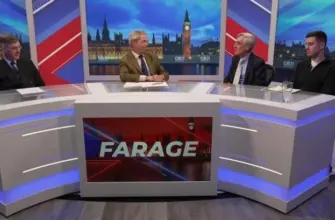## A Whirlwind of Tariffs and a Sudden Reversal
The atmosphere was buoyant Wednesday afternoon as President Trump emerged from the Oval Office amidst a backdrop of a thriving stock market and clear skies. Just hours prior, he had dramatically reversed course on his plans to impose widespread tariffs, narrowly averting what many feared would be a global economic crisis.
“You’ve got the markets seeing your brilliance,” remarked Senator John Barrasso (R-WY), a sentiment that Trump readily echoed with characteristic flair. “Nobody’s ever heard of it.”
This swift shift represented a remarkable turn of events, even within the context of Trump’s presidency. Over the preceding week, the world watched as the president seemingly brought the global economy to the brink, single-handedly triggering potential instability through newly announced tariffs. The stock market plummeted, businesses reshaped their strategies, and foreign governments braced for a significant disruption to international trade.
Ultimately, less than seven days after unveiling what would have been the largest U.S. tariff increase since World War II—a spectacle staged in the Rose Garden—Trump announced a partial rollback of these tariffs via his social media platform. Despite previously insisting on an unwavering stance, he declared, “I think the word would be flexible… You have to be flexible.”
Despite this reversal, considerable uncertainty remains as trade negotiations continue. It’s unclear precisely what was achieved beyond reportedly eliciting concessions from other nations eager to dissuade him from implementing the tariffs. No new trade agreements have been finalized, although administration officials claim discussions are ongoing.
However, tangible damage has already occurred. The volatile back-and-forth regarding tariffs has eroded confidence in U.S. leadership, exposed divisions within Trump’s own team, and left businesses reliant on global supply chains and international customers deeply concerned. Americans saving for retirement or college witnessed a period of unsettling market volatility.
The situation remains unresolved. While some tariffs have been temporarily suspended – including those targeting Japan, South Korea, and the European Union—a 90-day window for trade talks is now in place. A blanket tariff of 10% has been applied to numerous nations, while rates against China, the world’s second-largest economy, have reached a staggering 125%. Furthermore, tariffs of 25% remain in effect on Canada and Mexico—America’s largest trading partners—as well as on imported automobiles, steel, and aluminum.
As William Reinsch, former US trade official at the Centre for Strategic and International Studies observed, “This just accentuates the policy uncertainty and sense of unreliability Trump is creating.” While welcoming the avoidance of some of the most drastic tariffs, he questioned, “How does anybody know that he won’t change his mind on Friday or next week?”
The initial announcement was made under a distinctly patriotic backdrop – US flags were draped along the White House colonnade when Trump declared his intentions on April 2nd. “My fellow Americans, this is Liberation Day,” he proclaimed, brandishing a poster detailing the planned tariffs.
Following the announcement, Trump briefly retreated to Florida for the weekend. Upon his departure, he predicted, “The markets are going to boom, the stock is going to boom, the country is going to boom,” though the market ultimately suffered its worst single-day loss since the onset of the coronavirus pandemic five years earlier.
Across the nation and internationally, businesses scrambled to adjust. Fulcrum Coffee Roasters in Seattle anticipated rising costs for beans from Southeast Asia and Italian espresso machines. Stellantis, a major automaker, paused production at plants in Mexico and Canada, resulting in temporary layoffs in Indiana and Michigan. The Dutch division of Tata Steel announced cuts affecting 1600 employees—approximately one-fifth of its workforce. Ireland’s Prime Minister Michael Martin acknowledged the severity of the situation, stating, “there is no way to sugar coat” the impact on trade with the US.
Facing growing pushback from his own party, Republican lawmakers were bombarded with questions and concerns about the tariffs. Senator Ron Johnson (R-WI) questioned Trump’s strategy, asking pointedly, “Does anybody?” Companies like Kohl’s braced for increased costs while dairy farms anticipated difficulties selling their products. Harley-Davidson faced planned reciprocal tariffs from the European Union.
Despite earlier assurances, the tariffs on allies were implemented at midnight Wednesday before a sudden reversal occurred. Trump posted on Truth Social: “BE COOL! Everything is going to work out well,” followed by “THIS IS A GREAT TIME TO BUY!!!” – proving surprisingly prescient considering the subsequent market reaction. He later attributed his decision to monitoring the bond market, claiming it was a “very tricky” situation.
During another hearing on Capitol Hill, Representative Steven Horsford (D-NV) questioned Trump’s trade representative, Jamieson Greer, about the sudden tariff pause, exclaiming, “This is amateur hour, and it needs to stop.”
The White House attempted to frame the reversal as part of a deliberate strategy. Treasury Secretary Scott Bessent insisted the decision was driven by the president’s plan and the result of a Sunday discussion. However, Trump later contradicted this account, citing his observations of the bond market.



